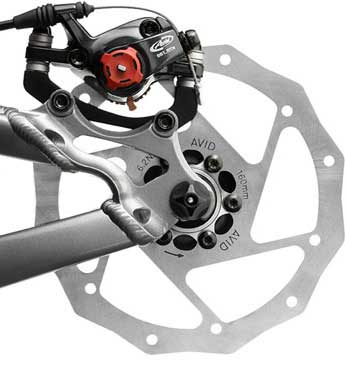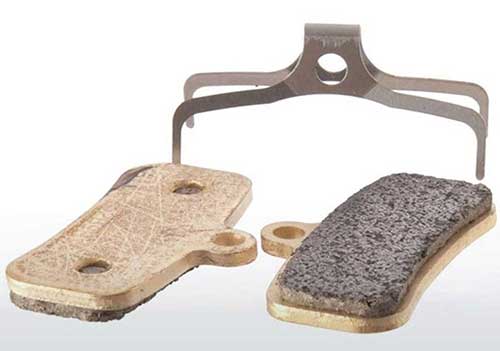Mountain Bike Disk Brake Pad Types
In order to get the best stopping power from your brakes you need to choose the type that is best for your riding style and riding conditions. These days it’s all about disk brakes on mountain bikes so if you are still using V brakes then it’s time for an upgrade! Of course not all disk brakes are the same either. There are mechanical and hydraulic disk brakes which each have their advantages and disadvantages. There are also various size rotors which perform differently as well.
No matter what type of disk brakes you use it’s a good idea to choose the type of brake pad that works best for you and where you ride. For the most part there are 3 types of brake pads available and they are metallic, organic and sintered and they each have pros and cons. For the most part we will group metallic and sintered together since they are similar and differ by how much metal is in the pads. Also you should keep in mind that certain brakes\rotors require certain types of pads so make sure to check on that before you replace them.

Now we will go back to the discussion of your riding style and conditions. Let's say you are a downhill mountain biker in Washington State. You would want to use metallic pads since they work better in wet conditions and offer better stopping performance for that type of riding. Plus they can be better for heavier riders or heavier downhill style bikes. And if you were an XC rider in Arizona you may want to use organic pads since they work well in dry conditions and tend to be quieter than metallic pads. There is nothing more annoying than listening to squeaky brakes all day long!
Now just because you live in one of these types of environments doesn't mean you have to use those types of pads. I have used both metallic and organic pads for various types of riding without having any issues but if you are an extreme rider or ride in extreme conditions you may want to stick with the type of pad that's better suited for your riding style and environment. I will say that organic pads do not last long at all for downhill riding and you may go through 4 sets of rears to 1 set of front pads if you do a lot of that style riding.

Here are the basic pros and cons of metallic and organic brake pads:
Metallic Pros
- Longer lasting
- Good for wet\muddy conditions
- Good for downhill riders
- Brake fade comes on faster
- Can be noisy
- Take longer to break in
- Higher rotor wear
- Quieter
- Bite a little better initially
- Less heat buildup
- Break in faster
- Low rotor wear
Organic Cons
- Don’t last as long
- Not as good in the mud
- May not keep their bite on harder stops
Posted by Jim Bernstein


